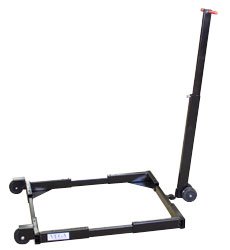- Joined
- Jan 30, 2015
- Messages
- 5
Hello All,
I have a MYFORD ML7 lathe which I am going to install on a newly fabricated (quite sturdy) cabinet.
I have the following questions:
1. In order to be able to move the cabinet around in the workshop I have installed castors on all four legs of the cabinet. Is there any long or short term problem in the operation of the lathe if it is resting on the castors (with the inherent unavoidable wobbling due to the castors)?
2. In order to get the lathe level on the cabinet top surface, I have installed four level adjusting screws under the lathe bed soleplates. This means that the entire weight of the lathe is born by the four heads of the adjusting screws which have a bearing surface of approximately 4 cm2 each. Is this configuration satisfactory or is there a better way to go around this issue.
Any suggestions welcome.
I have a MYFORD ML7 lathe which I am going to install on a newly fabricated (quite sturdy) cabinet.
I have the following questions:
1. In order to be able to move the cabinet around in the workshop I have installed castors on all four legs of the cabinet. Is there any long or short term problem in the operation of the lathe if it is resting on the castors (with the inherent unavoidable wobbling due to the castors)?
2. In order to get the lathe level on the cabinet top surface, I have installed four level adjusting screws under the lathe bed soleplates. This means that the entire weight of the lathe is born by the four heads of the adjusting screws which have a bearing surface of approximately 4 cm2 each. Is this configuration satisfactory or is there a better way to go around this issue.
Any suggestions welcome.


